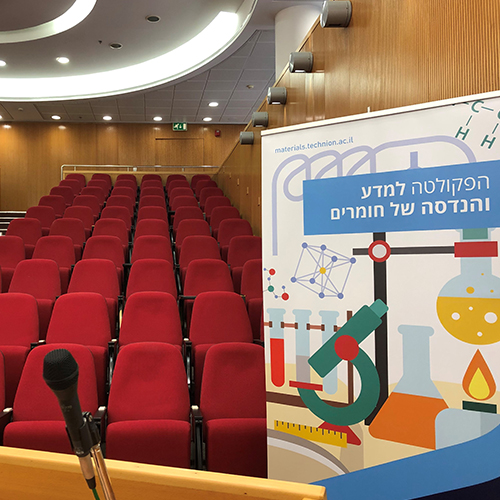
Mr. Zegeng Su - M.Sc. Candidate
05/01/2025
David Wang Auditorium, 3rd floor Dalia Meidan Bldg.
14:30
Thermoelectric (TE) materials are attractive for waste heat recovery and cooling applications since they can convert heat into electrical energy and vice-versa. We are interested in the effects of internal interfaces, particularly grain boundaries (GBs), on TE transport properties. We synthesize several (Bi1-xSbx)2Te3 compounds and find that the (Bi0.1Sb0.9)2Te3 member exhibits optimized TE performance. We ballmilled (BM) this compound at 30, 45, 90, or 120 min. followed by hot-pressing (HP) to obtain pellets with controlled grain size and GB misorientations. We found that the coarse-grained structure observed for the as-grown (AG) material (ca. 1-2 mm) is reduced down to ca. 3 μm due to hand-grinding (HG), then reduced down to sub-μm size upon BM. Correspondingly, the fractions of highly-misoriented and twin GBs increase with BM duration and saturate at ca. 45 % and 12 %, respectively, with respective decrease of the electrical conductivity. Interestingly, the lattice thermal conductivity exhibits the largest values for the AG samples and the lowest values for the HG ones, with nearly identical intermediate values for all BM ones, ranging from 0.4 to 2.5 W/mK at RT. We elucidate these findings in terms of preferred orientations, considering that the Te-Te van der Waals (vdW) bonds parallel to the {0001} basal planes reduce thermal conductivity along the c-axis. Finaly, we observe the atomistic structure of selected GBs to help us model their effects on TE transport. This study provides an original viewpoint on microstructureproperty relationships in TE compounds.


